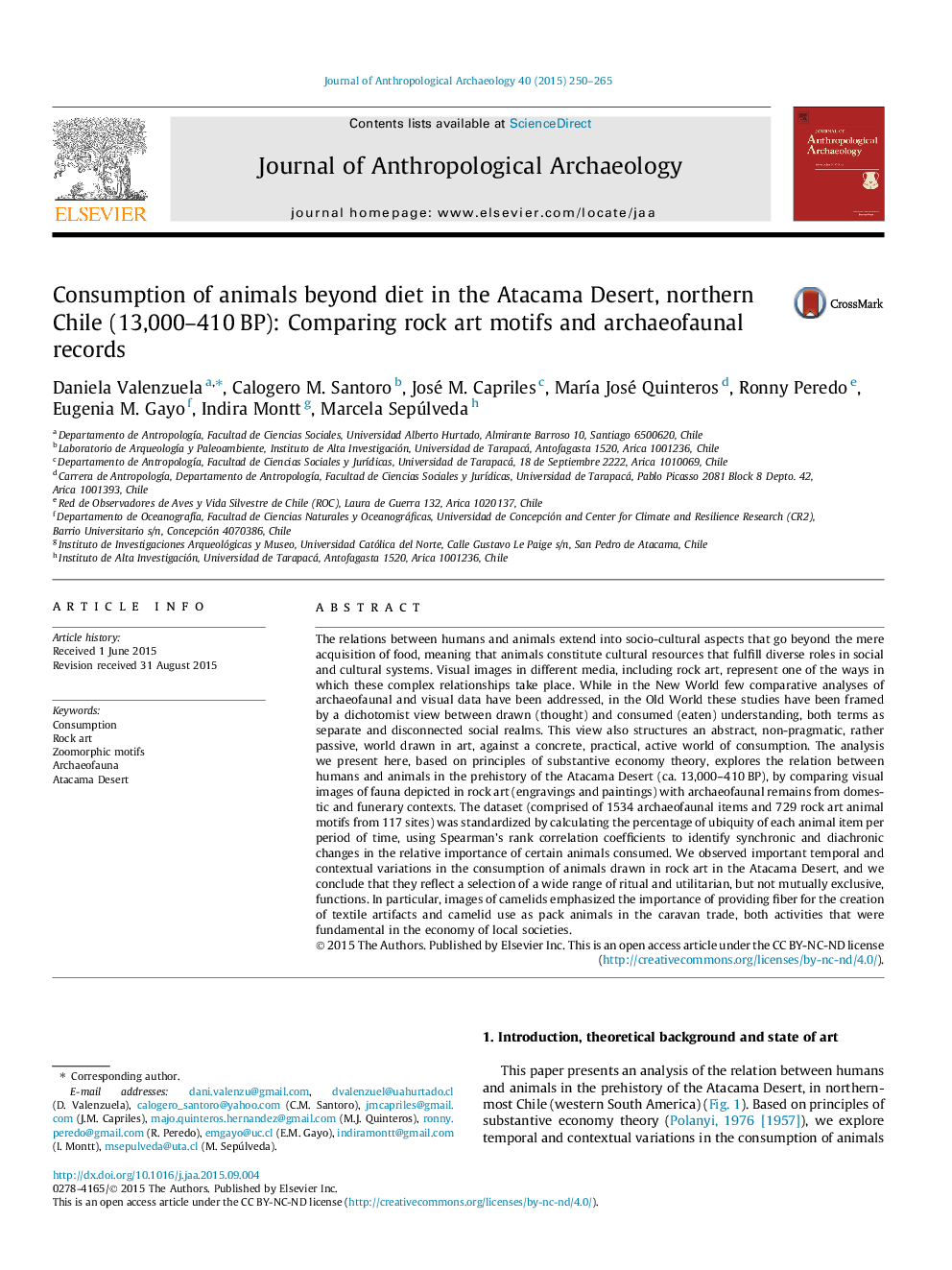| Article ID | Journal | Published Year | Pages | File Type |
|---|---|---|---|---|
| 7440551 | Journal of Anthropological Archaeology | 2015 | 16 Pages |
Abstract
The relations between humans and animals extend into socio-cultural aspects that go beyond the mere acquisition of food, meaning that animals constitute cultural resources that fulfill diverse roles in social and cultural systems. Visual images in different media, including rock art, represent one of the ways in which these complex relationships take place. While in the New World few comparative analyses of archaeofaunal and visual data have been addressed, in the Old World these studies have been framed by a dichotomist view between drawn (thought) and consumed (eaten) understanding, both terms as separate and disconnected social realms. This view also structures an abstract, non-pragmatic, rather passive, world drawn in art, against a concrete, practical, active world of consumption. The analysis we present here, based on principles of substantive economy theory, explores the relation between humans and animals in the prehistory of the Atacama Desert (ca. 13,000-410Â BP), by comparing visual images of fauna depicted in rock art (engravings and paintings) with archaeofaunal remains from domestic and funerary contexts. The dataset (comprised of 1534 archaeofaunal items and 729 rock art animal motifs from 117 sites) was standardized by calculating the percentage of ubiquity of each animal item per period of time, using Spearman's rank correlation coefficients to identify synchronic and diachronic changes in the relative importance of certain animals consumed. We observed important temporal and contextual variations in the consumption of animals drawn in rock art in the Atacama Desert, and we conclude that they reflect a selection of a wide range of ritual and utilitarian, but not mutually exclusive, functions. In particular, images of camelids emphasized the importance of providing fiber for the creation of textile artifacts and camelid use as pack animals in the caravan trade, both activities that were fundamental in the economy of local societies.
Keywords
Related Topics
Social Sciences and Humanities
Arts and Humanities
History
Authors
Daniela Valenzuela, Calogero M. Santoro, José M. Capriles, MarÃa José Quinteros, Ronny Peredo, Eugenia M. Gayo, Indira Montt, Marcela Sepúlveda,
